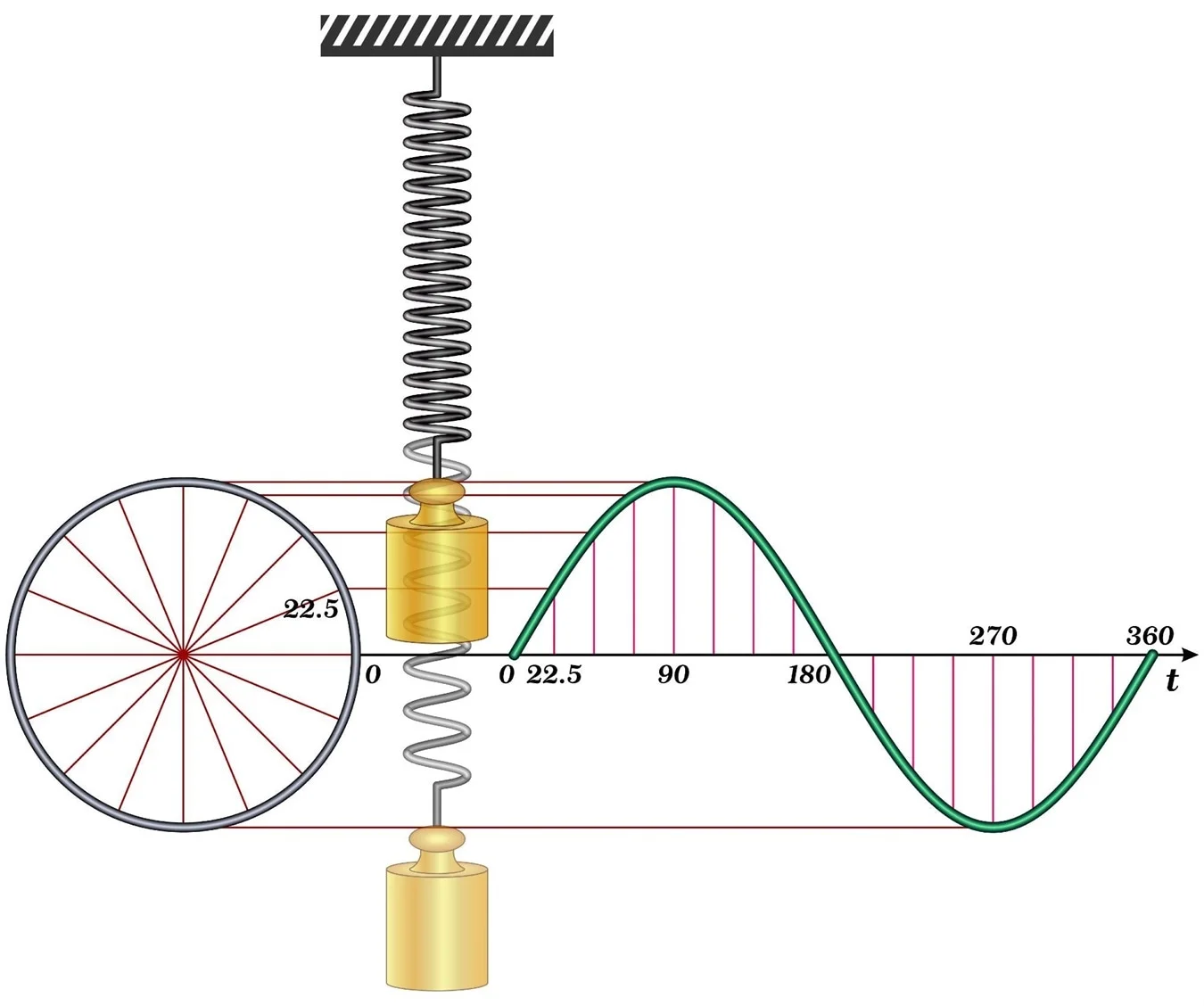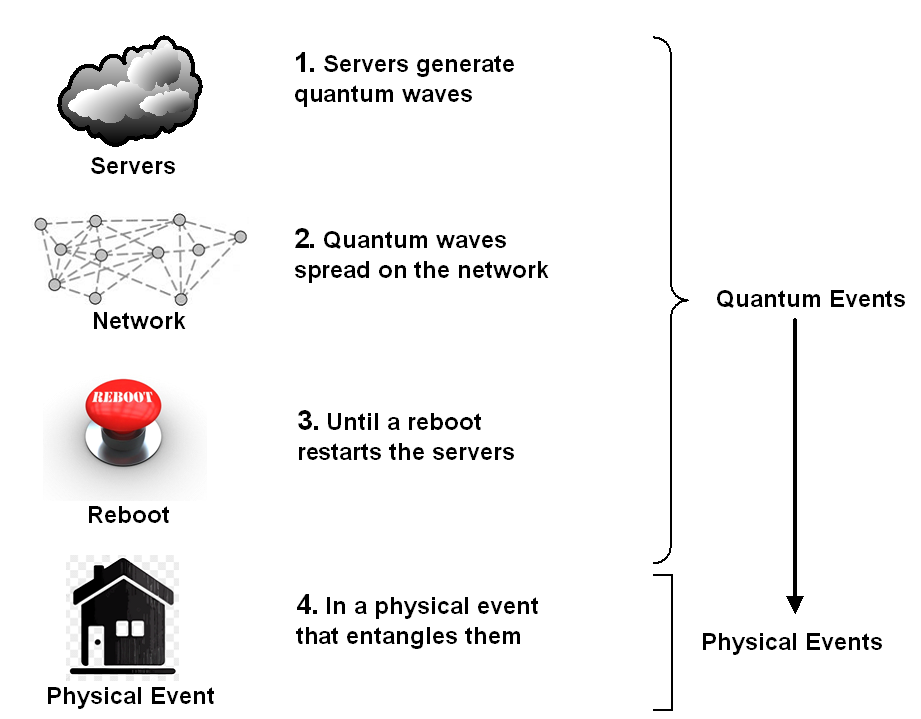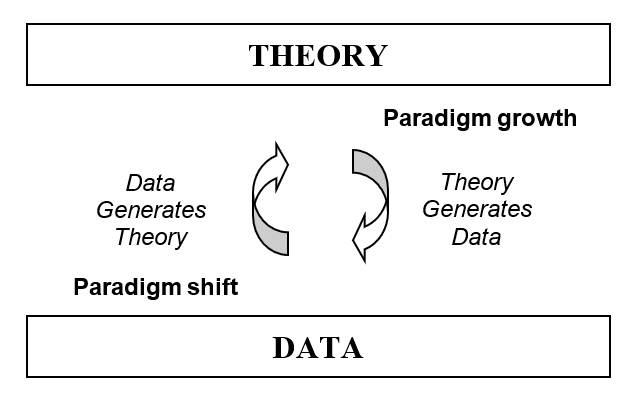Reverse engineering is grounded theory for computing, as it deduces what causes screen events. When we observe a screen, what changes it is unseen but we can deduce the cause, then refine that deduction by further observations until it reliably predicts what happens next.
Reverse engineering, a part of design science, can apply to physical events produced by quantum processing waves. These waves can’t be observed physically, but if unseen wi-fi waves can fill our screens with images, unseen quantum waves could do a similar thing for the screen of space. Reverse engineering then explains physical events based on quantum events, given that quantum reality is:
1. A network. So physical events are discrete not continuous.
2. That transmits waves. So entities move as waves not particles.
3. That vibrate at right angles to space. So space isn’t complete in itself but contained.
4. Until they interact in physical events. So physical events aren’t fundamental but derived.
These features of quantum reality suggest that our world isn’t as physics expected. Materialism assumes particle entities that move on single paths through empty space, but wave entities on a network spread on many paths. Which view is right then, particles or waves? For most empiricists, the answer is obviously particles, because the laws of physics work, but those who made those laws also imagined methods that assumed the opposite. These methods were accepted because they worked, and because mathematics doesn’t make claims about reality, but the result is that physics uses methods based on quantum features that contradict materialism. For example:
1. Calculus. The calculus used throughout physics began as a thought experiment, that infinitesimals predict physical events in the limit. It worked brilliantly, but that space and time change in tiny steps contradicted the assumption of continuity, so it became just a mathematical tool that is used but not believed in. Calculus was rejected as a reality description because it denied a canon of materialism, but if space and time really do change in quantum pixels and cycles [Note 1], then physical events are discrete not continuous.
2. Sum over paths. Feynman’s sum over paths theory also began as a thought experiment, that quantum particles take every path to a destination then pick the best one. Again, it worked brilliantly, but that entities move as waves contradicted the assumption that they are particles, so it also became a mathematical tool that is used but not believed in. Feynman’s theory was rejected as a reality description because it denied a canon of materialism, but if quantum entities really do move as waves, then physical entities must also move as waves not particles.
3. Complex numbers. Complex number theory was another thought experiment, that electromagnetic waves like light rotate in a plane outside our space. Again, it worked brilliantly, but having a plane outside space contradicted the assumption that space is complete, so it also became a mathematical tool that is used but not believed in. Complex number theory was rejected as a reality description because it denied a canon of materialism, but if there really is a dimension outside our space, then space isn’t complete but contained.
4. Quantum mechanics. Quantum mechanics was yet another thought experiment, that unseeable quantum waves interact to cause physical events. Again, it worked brilliantly, but that quantum waves cause physical events contradicted the assumption that those events are fundamental, so it also became a mathematical tool that is used but not believed in. Quantum mechanics was rejected as a reality description because it denied a canon of materialism, but if quantum events really do cause physical events, then physical events aren’t fundamental but derived.
All the above methods, of calculus, sum over paths, complex numbers, and quantum mechanics, are used in physics because they work, but what they imply is ignored because they are called imaginary. But if these methods are good enough to use, why aren’t they good enough to believe? The answer it seems is that they deny materialism, an ancient belief of Aristotle. For if the method of calculus is true, then our world isn’t continuous. If the sum over paths method is true, then entities don’t move as particles. If complex numbers are true, then our space isn’t complete. And if quantum theory is true, then physical events aren’t fundamental. This leaves physics caught between what it believes and what works, like a sailor who says the earth is flat but has to use global coordinates to navigate.
Yet when evidence contradicts belief in science, isn’t the latter supposed to win? If global coordinates work, doesn’t that mean that the earth isn’t flat? Based on the evidence, it isn’t quantum theory that is imaginary but materialism, and the other methods suggest the same. Why then don’t physicists want their equations to be true, as they would be if quantum waves exist? Wouldn’t that make physics simpler?
The answer seems to be a dread that accepting quantum reality will open the door to magical thinking, where quantum powers allow psychic healing, telepathy, psychokinesis, and other miracles (Chopra, 1989). Physics doesn’t want to go back to a dark age of God theories, that explain everything but predict nothing.
Yet this fear is unjustified because reverse engineering doesn’t work that way. For example, quantum computers are powerful but not magical because quantum waves spread, collapse, restart, and entangle based on quantum laws, not an all-powerful being. They act in physically impossible ways but they are lawful, so they aren’t miracles. That reality is quantum then doesn’t allow miracles, any more than that it is physical does. Quantum realism is no more a God theory than a quantum computer is a God computer.
Using reverse engineering to develop a model of how quantum processing works doesn’t open a door to quantum mysticism, but it may explain what materialism can’t, which why quantum theory works in the first place.
Note 1. For any calculus involving time, replace dt by dp, a small number of processing cycles. Now dp can indeed tend to zero because there cannot be less than one processing cycle.
Next




